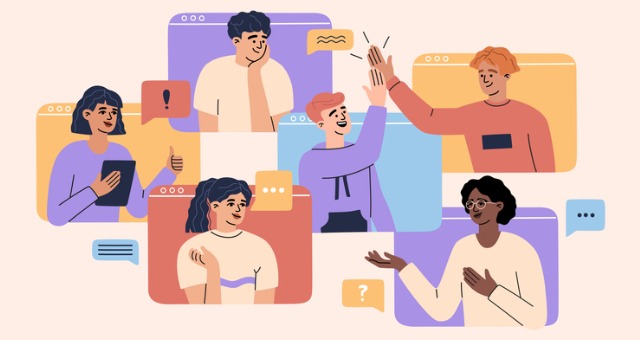
The teaching and learning process has greatly evolved in recent years. Schools and institutions are adopting advanced technology to pass their knowledge to students. The shift towards a student-centered approach helps them track each student’s engagement and success rate. However, since the COVID-19 pandemic, students have faded from their studies and education. They have troubled attending continuing education classes and keeping up with the course or syllabus. Taking online classes should carry motivation and discipline to let the students study in isolation. The lack of face-to-face learning helps online students to give up on their focus and attention without anyone noticing.
According to several studies, using technology has also helped many students and educators to make learning effective. The study has found that students who attend online classes are more attentive and engaged than in the traditional classroom. Educational institutions have successfully integrated digital content into their teaching practices. Influencing students to adapt to technology and engage in their studies is not pretty straightforward.
Here are various ways to improve the students’ engagement using digital content:
The enjoyable and captivating learning process
The online learning process for students must be enjoyable and captivating. But a student has to develop his inner strength and willpower to relish the learning process. Deep engagement in learning is very much essential for a student to understand concepts and strategies in a better way. The educators should present compelling lessons to the students, making the topics more fascinating.
When students get interested in attending a class session, they develop various skills that are useful to accomplish their future endeavors. These skill sets assist them to stay ahead in any competition and land their best professional career and development. For educators, the new digital content helps make necessary changes in their teaching styles, identify shortcomings, and self-analyze their pedagogical methodologies.
Audio-Visual content to increase learner engagement
The audio-visual content makes the classroom session more interactive and engaging and can have a long-lasting impact on students. In the traditional learning method, student-teacher interaction is not good enough as students passively listen to the lectures. Thus, leaving a long-lasting impact on students becomes a strenuous task for teachers. Audio-visual content relieves you from these difficulties and helps grab learners’ attention. The Digital content technique makes it easier for students to understand a variety of concepts. Video content is the most effective audio-visual content as it simplifies learning concepts, transforming complex ideas into understandable ones.
Practice Test
In conventional classroom coaching, it is compulsory to memorize all the facts and methods for a student as the same topic is hardly discussed in future sessions. But attending practice tests and clearing assessment is way more exciting because it promotes understanding of concepts rather than rote memorization. The practice test is an effective digital content that encourages students to brush up on their knowledge, stay ahead with the learning schedules and maximize their potential.
Text Content
Text content requires lots of research and hard work to be prepared. A planned text content makes the class more effective for students. Schools or educators provide access to text content beforehand to the students so that they can prepare for the lectures efficiently. When students attend any lectures, they most likely forget to take some notes. In such cases, text content distributed to them is of great help to them.
Adding digital content to the pedagogical methodologies can be very beneficial to the students and educators. Undoubtedly, integrating it into the learning process not only increases the students’ engagement but is also helpful to spark learning interest in students.